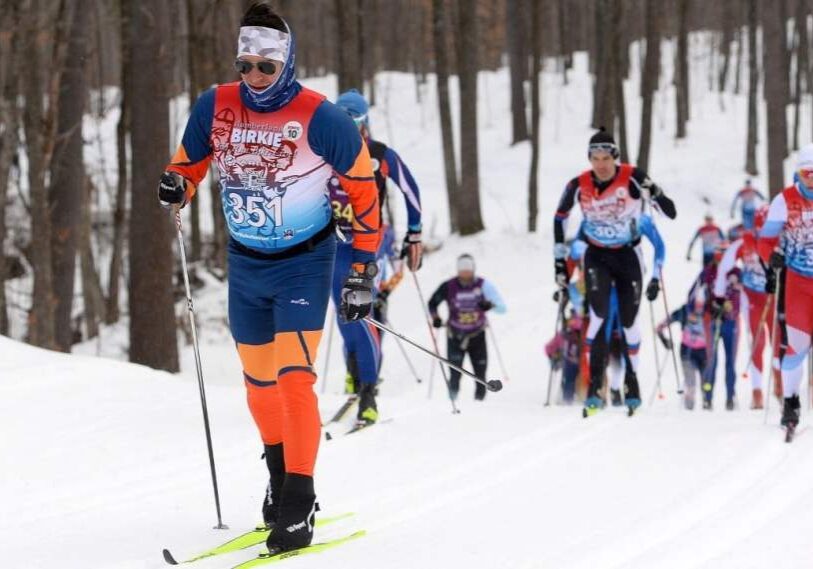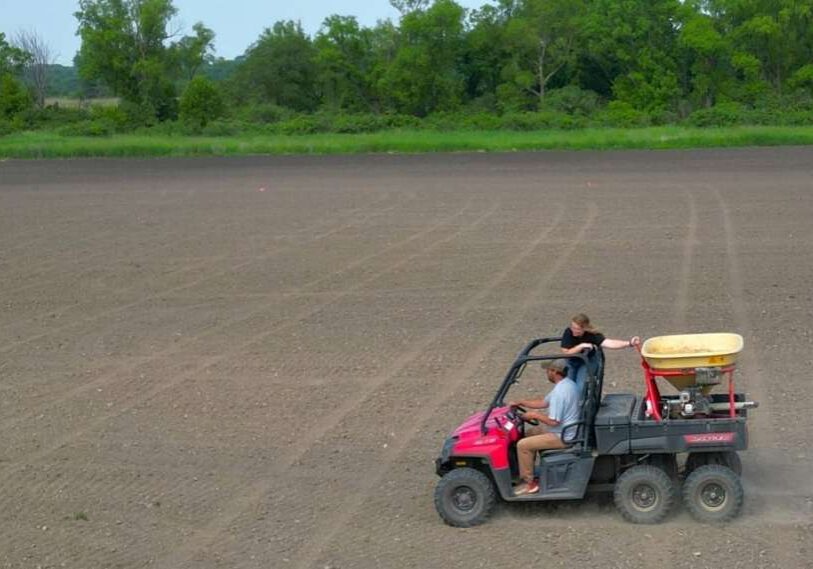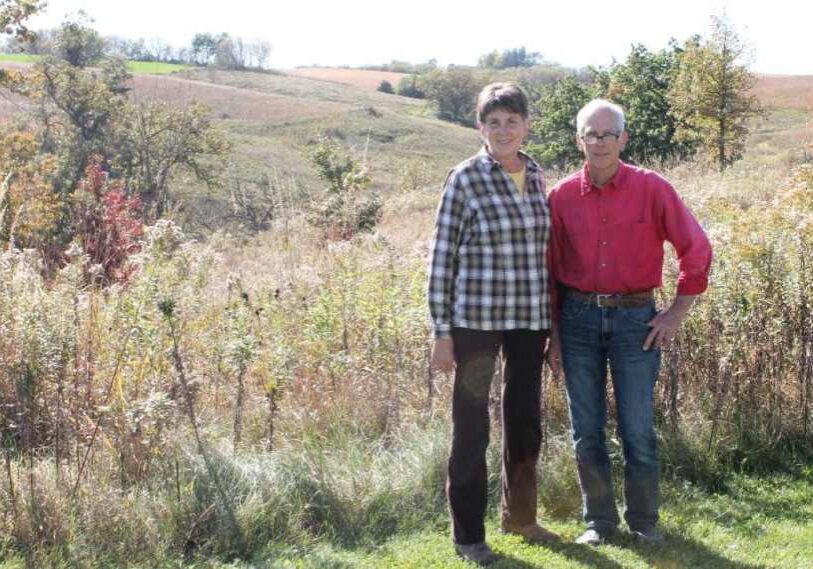Mill Creek in Chatfield Gets Partial Makeover

CHATFIELD – Later this summer, 2,247 feet of Mill Creek beginning on the downstream end of Groen Park in Chatfield will, at times, be a muddy mess as construction equipment rumbles along the banks churning up the water. For a moment, this creek will look nothing like the prized trout-fishing water it’s about to become.
Don’t judge the stream by what you see this season.
Wait.
Give it time to heal from the reconstruction and you will see a reborn section of stream that will host big trout and countless anglers. It is expected to eventually look a lot like the stretches upstream that have already been turned into more trout- and angler-friendly water.
When done, the stream will be about 1,000 feet longer, will dump much less sediment into the Root River (which is the project’s end point), and will add a bit more to the region’s economy. The section of Mill Creek right in Groen Park, however, will be improved later when a pedestrian bridge is added.
Region wide stream improvements also underway
Mill Creek is not the only trout stream project in southeast Minnesota. South of Chatfield, about 5,200 feet of Rice Creek has already been improved. Maple Creek, near Choice, will have 3,500 feet within a state wildlife management area upgraded. And anglers south of Mazeppa (Wabasha County) will see about 3,100 feet of improvements to Mazeppa Creek.
You might not have to wait too long to see results when Mill Creek is done. A recently finished portion of Rice Creek (pictured below) was already looking much better when this reporter visited in early June 2024. Just a year ago, its banks were sloped back and seeded to grasses, more riffles were added, and it has more bends and deeper pools in the stream itself. All help grow and support trout.

Rice Creek, south of Chatfield, already shows results after a habitat improvement project done in late spring 2023. Its banks were sloped back to dampen the power of high water. (Photo by John Weiss)
The Mill Creek stretch to be improved needs work because it’s as close to a biological desert as it could be in certain sections where it’s just sand and silt, said Jenny Biederman, Minnesota Trout Unlimited’s (MNTU) statewide habitat coordinator. “I don’t see a ton of fish down there.”
Biederman believes that “if you would go in there and look for aquatic invertebrate life you would probably find a very small diversity and low abundance … there is very, very, very little habitat for them.”
While it’s on private land, TU can use money from the state’s Outdoor Heritage Fund because the land has an easement that allows anglers, and only anglers, to use it.
World class trout habitat in the Driftless
Before learning about what will happen to Mill Creek, as well as the other streams, it’s important to know more about trout streams in the Driftless Area. This unique area includes the blufflands of southeast Minnesota, southwest Wisconsin, northeast Iowa, and a bit of northwest Illinois.
Trout Unlimited’s Driftless Area Restoration Effort explains it like this: “What many may not realize is that the Driftless Area is home to one of the country’s most remarkable freshwater resources — with over 600 cold water, limestone, spring-fed creeks supporting a world-class trout fishery. ‘Driftless’ refers to a geographic area in the Midwest that remained unglaciated during the last ice age. As glaciers moved across North America, they altered the landscape and left behind ‘drift’ which was a mix of rock, boulders, silt, and other residue. The Driftless Area retained its remarkable terrain because it was not altered by a glacier.”
Thus, the Driftless is a magnet for trout anglers because of so many streams big and small that are relatively close together. According to the Minnesota Department of Natural Resources (DNR), our region has about 700 miles of streams ranging in size from the larger Whitewater and Root River systems to tiny streams that are easy to hop over. Few need more than five or 10 minutes of walking to reach. Some run through private property and are off limits but several dozen miles are on state land and about 250 miles of southern Minnesota streams, mostly in the southeast, have easements.

Brown trout about to be released back into the stream. (Photo by Pete Fryer)
Public and private partnerships build resilient streams
Minnesota TU, however, is getting the money from the Minnesota Legacy fund and doing much of the other work. MNTU partnered with the Natural Resources Conservation Service in the beginning for design work and also with WSB & Associates. To help get vegetation established, the landowner agreed to keep cattle out for a year.
Minnesota Trout Unlimited uses “a competitive bidding process approved by the State to select both design/oversight firms and construction contractors. MNTU contracts with each firm, pays the invoices, and later seeks reimbursement from the State per the OHF (Outdoor Heritage Fund) grant agreement,” Biederman said.
“The environmental design firm does a pre-project survey, design work, permitting, and construction oversight. MNTU and MNDNR may assist the design firm with construction oversight depending on the project. The DNR participates in the design walks and design review. Minnesota Trout Unlimited manages all aspects of contracting and project management.”
“The work that will be done by Barth Construction is actually nothing unusual,” said Dusty Hoffman, DNR stream habitat specialist. In fact, it’s much the same as the three other projects that will get done or have been done this summer in the region. And it will be a lot like those from the past decade or so. It’s all part of trying to rejuvenate our trout streams, which have gone through a lot of abuse from poor land use that started more than a century ago.
Before Europeans came, the region was mostly prairie with substantial oak savannas and other woods. Streams ran clear and cold, with only brook trout in them. Then came European settlers, and slowly came trouble. Most immigrants were farmers and they didn’t know how to work the hilly, easily-eroded landscape. They cut down forests and ran cattle along the hillsides. This allowed any rainfall or snowmelt to rush off the land, carrying with it countless tons of topsoil.
Gradually, the streams degraded and became too wide and shallow, allowing sand to build up over rocky riffles that were home to the bugs that trout eat. It’s not known if any of the original brook trout survived. To help the fisheries, European brown trout, which can withstand poorer water, were stocked and are now, by far, the dominant trout.
Once poor farming practices were dramatically slowed, the land began to heal. But trout streams were still hurting from the problems in the past, so the DNR and TU began to hasten natural healing. Habitat improvement projects try to make the streams look more like they once looked – faster, narrower, deeper.
Rocks, riffles, bugs, and lunkers
According to Dusty Hoffman, DNR stream habitat specialist, here are some of the key components of the Mill Creek project:
- Getting rid of eight badly eroding banks and sloping them back, if possible, so the stream can reconnect to its floodplain. The longest bank is 190 feet long and one is eight feet tall, though they average six feet. If there’s no room to slope them back, they will be benched. The land is then seeded with grasses.
- It is estimated this project will keep 84.7 tons of soil (that’s six dump truck loads) out of the Root River and Mississippi River each year.
- The wide, shallow, sandy stretches will be narrowed considerably to increase the current which will get rid of more of the sand and silt in the streambed. “You will see the good substrate and the bad substrate will keep moving,” Hoffman said. Anglers will see more rocks and rubble in new riffles instead of just endless sand.
- Clusters of boulders in the main channel will move the water faster so it scours out the channel and provides additional trout habitat.
- Years ago, an oxbow in Mill Creek was cut off and is now dry land. That will be reconnected, adding about 1,000 feet to the stream. (An oxbow is a severe bend in a river channel that creates a U-shape around a narrow strip of land. Over time, the river will erode this land leaving a dry creek bed.)
- Lunker structures will be put in so brown trout will have more places to hide. (This is an artificial structure built or placed in the stream to mimic undercut banks which provide habitat for trout.)
- Riffles will be stabilized so macroinvertebrates (bugs) will have places to live and feed trout. A place will be built for cattle to cross so they don’t unnecessarily disturb the stream.
- Wads and lower trunks of trees cut from along the bank will be put into the bank, with the root wad facing out, to break up the power of the streams. “They also give the trout cover,” he said. “Brown trout are very specific to overhead cover in comparison to brook trout. Brook trout can do fine without overhead cover unless they are feeding.” At the base of the project will be a big towhead with more than 70 trees close together with rock in between the roots.

Trout Unlimited volunteers prepare to move a nearly finished lunker structure during a volunteer day to help on Mill Creek improvements. (Photo by John Weiss)
Now, for the economic side of the picture. The 600 cold-water streams in the Driftless help pour money into the local economies, according to TU. A 2016 study found the direct and indirect economic impact is $1.6 billion.
“The direct spending by visiting anglers, government agencies, and non-government organizations adds well over $413 million to the Driftless Area economy each year,” the report states. “The secondary effect of this spending adds an estimated $670 million to the Driftless Area economy each year. And helps fund nearly 6,500 jobs across the region.”
Dedicated volunteers show up to help with the project
For 13 members of Hiawatha TU (Rochester area), the Mill Creek project was also a chance to help out directly. In May, along with Biederman and Heath Gerard of Barth Construction, they met near where Mill Creek enters the Root River to build eight lunker structures which will be put into the stream. It was hard work in the cold wind, but they did it; a few even went fishing afterwards.
Marty Johnson of Harmony said he saw a notice about the work project in an email. “Thought I would help out,” he said. “I like projects like these.”
Wayne Weber of Kasson said he likes projects like that instead of having to speak out. “I kind of like to work this kind of stuff as opposed to the advocacy kind of stuff. I’m kind of shy,” he said.
Ken Granle of Mantorville wore a mask to keep warm in the biting wind. He came with his buddy, Greg Goodnow, a regular volunteer. “We decided to come rain or shine,” he said. “We’re going to go fishing afterwards.”
Unlike some who decided it was too cold to tie a decent knot (me included), they did fish. “The wind was not as bad down in the valley,” Goodnow said. “Ken did very well, and I had a new set up that did not do well.”

Paul Krolak of Rochester drills a starter hole for big screws to hold together a bunker structure for Mill Creek. Behind him is Dean Flugstad. (Photo by John Weiss)
Todd Christenson of Rochester said he came because he’s part of TU and “wanted to do more to help the trout habitat and the volunteer activities.” He fishes about once a week and enjoys the habitat improvement projects so he wanted to create something for a project.
When it’s done, results should show up quickly, Biederman said. There will be better distribution of fish and the “riffles are super important for habitat,” as are root wads. Fish will move in “right away, totally,” she said. “I would fish this thing right away, 1,000 percent.”






